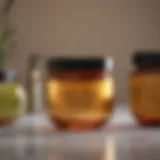Effective Methods to Remove Makeup Stains From Clothing
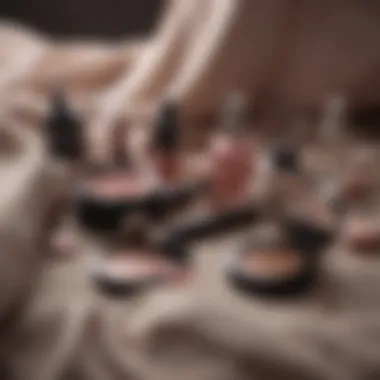
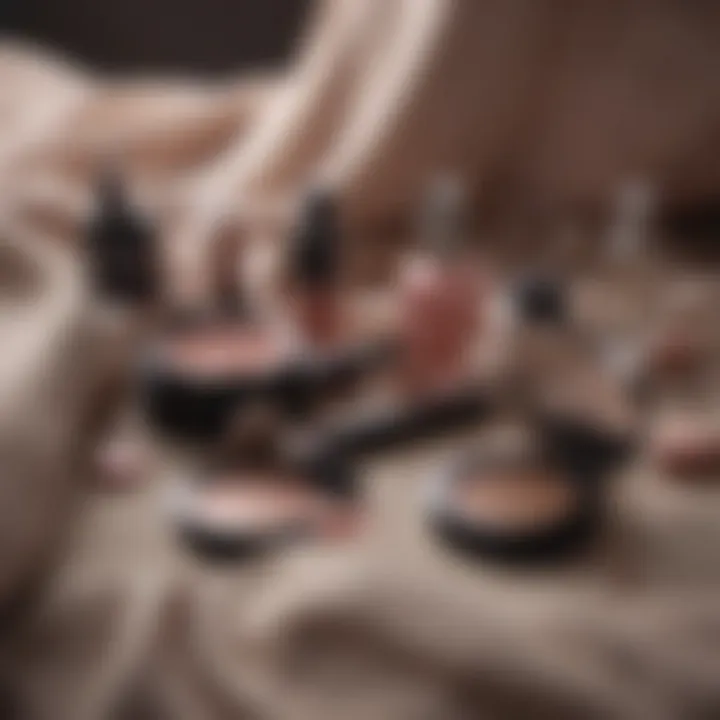
Intro
Makeup stains on clothing are an annoyance faced by many individuals. These marks not only spoil an outfit but can also diminish confidence. Removing these stains effectively requires an understanding of the types of makeup and fabrics involved. Various methods exist, each tailored to specific situations. Whether you are dealing with foundation, mascara, or lipstick, there are solutions that can return garments to their original condition. In this guide, we will explore effective methods to tackle these stubborn stains. Additionally, understanding preventative measures can save much trouble in the future. This article aims to streamline the process for you and to help you maintain your wardrobe while indulging in beauty applications.
Beauty Tips and Tricks
Skincare Routine Tips
A sound skincare routine can minimize the chances of makeup transfer to clothing. To achieve this,
- Prep Your Skin: Begin with a proper cleanser to remove impurities. A well-cleaned skin allows makeup to adhere better.
- Use a Primer: Investing in a quality primer can create a barrier between your skin and makeup, thus controlling transfer to clothes.
- Setting Products: Finally, use a setting spray or powder. These products lock the makeup in place and decrease the likelihood of smudging.
Makeup Application Techniques
The way you apply makeup can also impact potential stains. Techniques to consider include:
- Blotting: Regularly blot your face with oil-absorbing sheets. This reduces shine and minimizes the need for touching up that might smear makeup.
- Layering: Build coverage gradually instead of applying thick layers. It can help in maintaining makeup integrity throughout the day.
"A little preparation goes a long way when it comes to avoiding makeup stains on clothing."
Product Reviews
Choosing the right products can make a significant difference in your routine. Focus on high-quality items that are also stain-resistant.
Makeup Product Reviews
When selecting makeup products, reviews suggest opting for long-wear formulas. Brands like Fenty Beauty and Estée Lauder are known for their foundation durability, which reduces transfer risk. Check if products are labeled as transfer-resistant.
Expert Beauty Advice
Professional Makeup Artist Insights
Engaging with experts can reveal useful techniques. Many makeup artists recommend using waterproof products, especially for eye makeup. This reduces the likelihood of smudging, which can lead to stains on clothing.
Finale
In summary, dealing with makeup stains does not have to be a daunting task. By employing practical techniques and using the right products, one can significantly reduce the chances of ruining garments. Furthermore, establishing effective skincare routines can enhance the longevity of makeup and ensure a less messy application. With these insights, readers can actively take steps to maintain their wardrobes while enjoying their beauty rituals. The next sections will delve deeper into specific stain removal techniques and preventive strategies.
Understanding the Nature of Makeup Stains
Understanding makeup stains is crucial for any person dealing with cosmetics. Makeup can be composed of various compounds, colors, and textures, which can affect the ease of removal from clothing. Any successful cleaning method must consider these differences to effectively eliminate the stains. This section will discuss the different types of makeup products and their impact on different fabrics, laying the groundwork for the techniques to be explored later in the article.
Types of Makeup Products
The makeup landscape is diverse. Each product has characteristics that influence its potential to stain clothing. Recognizing these can guide effective removal strategies.
Foundations
Foundations are designed to provide an even skin tone. They come in liquid, cream, or powder forms. Their oils and pigments can often seep into fabric fibers, making them challenging to remove. Understanding that liquid foundations may require different treatments compared to powder foundations is essential for successful stain removal. Liquid formulas, while popular for their coverage, can be especially problematic for certain fabrics due to their consistency.
Lipsticks
Lipsticks are another common source of stains. They contain oils and pigments that can linger long after the initial application. Matte lipsticks particularly can be stubborn due to their waxy texture. Removing lipstick stains requires a careful approach. A timely response can aid in easing the cleaning process, but it is often necessary to use specific products to treat these stains effectively.
Mascaras
Mascaras are typically designed to withstand smudging and water. This makes them a unique challenge when it comes to fabric stains. The dark pigments mixed with waxy substances can cling to fibers. Understanding how to identify whether the stain came from waterproof or regular mascara is vital in addressing the removal process. Additionally, quick action will generally yield better results.
Blushes
Blushes appear in various forms—powders, creams, and gels. Each type has different formulations that can stain differently. For instance, powdered blushes may not absorb into fabrics as readily as liquid formulations, which can seep more easily. Understanding these distinctions can enhance the approach to treatment. Additionally, it is important to know when a color is more likely to transfer to clothing, potentially leading to stains.
Eyeshadows
Eyeshadows can also pose a significant risk for fabric stains. This product is often found in powder form but can also appear as creams or liquids. The powdery nature of eyeshadows can lead to fall-out, and their vibrant colors can leave noticeable marks on clothing. Due to their texture, powdered eyeshadows may require different treatment methods than those used for liquid variants. Being mindful of how these differences influence stain removal can be beneficial for those who frequently use these products.
Common Fabrics and Their Sensitivities


The fabric type significantly impacts how makeup stains are treated. Some materials are more absorbent, while others can withstand harsher cleaning methods.
Cotton
Cotton is a widely used fabric known for its softness and breathability. It is often resilient when it comes to various cleaning techniques. However, makeup stains can still penetrate its fibers, making timely treatment important. Choosing the right cleaning method is essential to prevent any long-term damage. Cotton can typically handle a variety of cleaning agents, but awareness of specific sensitivities helps ensure effective results.
Wool
Wool is a natural fiber that requires more careful handling. Its structure can trap oils, and makeup's pigmented nature can lead to deeper stains. Generally, wool should avoid strong cleaning agents or rough scrubbing methods that could damage its natural fibers. This fabric's sensitivity requires using gentle techniques to treat any stains without harming the material.
Synthetic Fibers
Synthetic materials such as polyester and nylon often have stain-resistant properties. They can usually withstand more vigorous cleaning methods, making them an advantage for makeup stain removal. However, their ability to repel stains can sometimes lead to the makeup sitting on top of the fabric, potentially making it easier to remove compared to natural fibers. Empirical knowledge about each type's cleaning capabilities can further assist in stain management.
Silk
Silk is luxurious yet delicate, requiring meticulous attention during cleaning. Being prone to staining, it can absorb makeup quickly, making quick action critical to successful removal. It is usually not advisable to use water on silk, as this could lead to water stains. Using appropriate cleaning solutions and methods is essential to maintain the integrity of silk garments.
Denim
Denim is known for its durability and is often resistant to stains. However, its absorbent nature can occasionally lead to makeup stains that become embedded in the fabric. While it can generally endure harsher cleaning methods, caution is still warranted to avoid fading the color or damaging the material. Adequate knowledge about how denim reacts to different makeup types can streamline the stain removal process.
Understanding the specific nature of makeup stains and the materials they interact with is key to effective stain management. This knowledge allows for appropriate strategies that align with both the stain type and fabric involved.
Immediate Actions to Take
Makeup stains can create anxiety for many people. The immediate actions taken after a stain occurs can significantly dictate the success of removal. Quick assessment and prompt treatment are crucial. Ignoring the stain only allows it to set deeper into the fabric, making it increasingly difficult to remove later on. Understanding how to properly manage a stain right away can save a beloved garment from potential damage.
Assessing the Stain
Identifying the Type of Makeup
Recognizing the specific type of makeup involved in the stain is vital. Different formulations, such as liquid foundation or cream blush, have distinct chemical compositions that dictate how best to treat them. For instance, oil-based products like certain lipsticks may require a different approach compared to water-based foundations. Identifying the makeup ensures that the appropriate stain removal technique is used. This specificity can significantly enhance the chances of successful removal.
Some makeup types contain emollients and waxes that can cling stubbornly to fibers. Understanding this characteristic allows for informed decisions on treatment methods. Knowing whether the stain comes from a shimmer eyeshadow or a matte lipstick may influence the choice of solvent. This knowledge is essential for optimal treatment.
Determining Fabric Care Instructions
Every piece of clothing has care instructions that indicate how best to wash and treat it. These guidelines, often found on labels, inform the user about the appropriate washing methods and temperature tolerances. Aligning the stain removal process with these instructions is pivotal. Ignoring care labels can lead to color bleeding or fabric shrinkage, which compounds the original problem.
The care instructions contain critical insights into whether a fabric is machine washable, suitable for dry cleaning, or needs special treatment. Heeding this information reduces the likelihood of damage during the cleaning process. For example, delicate fabrics like silk require gentle handling, while cotton can withstand more robust treatments. Thus, understanding fabric care instructions is an important factor that contributes significantly to the stain removal success.
Blotting the Stain
Using a Clean Cloth
Utilizing a clean cloth for stain treatment is one of the first and most critical steps. A clean, absorbent cloth helps to lift the makeup from the fabric without spreading it further. The act of blotting is gentle and prevents making the stain larger; this is particularly important with liquid makeup that can seep deeper into the fibers over time.
The clean cloth should be white or light-colored to avoid dye transfer, setting the stage for effective stain removal. Moreover, pressing down gently allows the cloth to absorb the makeup rather than rub it into the fabric. In a time where quick fixes are often sought, the simple act of using a clean cloth can yield significant results.
Avoiding Rubbing Actions
Rubbing a stain can inadvertently cause more harm than good. It may push the makeup deeper into fibers, creating more stubborn stains. Being aware of this is beneficial for anyone tackling a makeup stain. Instead, the focus should remain on blotting the area to absorb as much of the product as possible.
This method avoids extra damage to the fabric and also preserves the original texture and appearance of the clothing. The repeated act of rubbing not only worsens the stain but could lead to wear or pilling of the fabric, especially in gentler materials. Therefore, it is essential to emphasize precautions against rubbing actions when treating stains.
Household Remedies for Stain Removal
Household remedies play an important role in the removal of makeup stains from clothing. Often, they are more accessible and cost-effective than commercial products. Using items already in the kitchen not only saves money but also allows for eco-friendly cleaning solutions. It is crucial to understand that while some remedies work well on certain stains, others might not be as effective, requiring careful selection based on stain type and fabric.
Common Kitchen Ingredients
Baking Soda
Baking soda is a versatile ingredient beneficial for removing makeup stains. Its gentle abrasive nature helps to lift stains without damaging the fabric. One of the key characteristics of baking soda is its ability to neutralize odors, making it a popular choice for garment care. A unique feature is its capability to absorb moisture, which can help in lifting some stains effectively.
However, while baking soda is advantageous for tough stains, it can sometimes leave a residue if not rinsed thoroughly, which may be disadvantageous, particularly on darker fabrics.
Vinegar


Vinegar is another household staple known for its stain-fighting properties. Its acidic nature makes it effective against a range of makeup products, especially those containing oils and pigments. Vinegar is popular for its availability and safety in comparison to harsh commercial products. Additionally, it can help to restore the fabric's natural shine.
Yet, vinegar has a distinct scent that may not appeal to everyone. This characteristic might deter some individuals from using it on delicate fabrics or light-colored clothing, where the smell might linger.
Dish Soap
Dish soap is effective in breaking down grease and organic stains, making it useful for lip products and other oily makeup. The key feature of dish soap is its formulation, which is designed to cut through stubborn grime, thus facilitating stain removal. Because of its effectiveness and ease of access, it is widely used in homes.
It's important to note, though, that dish soap can sometimes cause fading in brightly colored fabrics when used in high concentrations. Therefore, moderation is advised while using it for makeup stains.
DIY Solutions
Mixing Ingredients for Specific Stains
Mixing various kitchen ingredients can yield effective solutions tailored for specific stain types. For example, combining baking soda with vinegar can create an effervescent reaction that helps lift stains from the fabric. The ability to customize these mixtures provides flexibility in addressing diverse challenges concerning various makeup products.
One significant advantage of creating DIY mixtures is that you can adjust ratios based on the stain severity, thereby optimizing the cleaning power. However, users should be cautious, as not all combinations are safe for every fabric type and risk potential discoloration.
Spot Testing Before Application
Spot testing before applying any cleaning solution is crucial. This process allows you to check if the mixture reacts negatively with the fabric, potentially causing damage. The practice of spot testing highlights the key benefit of preventing broader staining issues or permanent damage. This simple step can save valuable items from becoming unwearable.
The unique feature of spot testing is ensuring that any treatment is fabric-friendly, prolonging the life of clothes. Despite being an additional step, it is beneficial and helps to ensure that your cleaning efforts meet desired results.
Commercial Products for Stain Treatment
Understanding the role of commercial products for stain treatment is crucial in addressing makeup stains on clothing. These products often offer targeted solutions that household remedies may not provide. They cater to various types of makeup and fabrics, making them a popular choice for many users. Selecting the right product can ease the process of stain removal and save garments from potential damage.
Stain Remover Sprays
Product Recommendations
When it comes to stain remover sprays, several options stand out due to their effectiveness. Brands like Zout, Shout, and OxiClean have formulas designed specifically to tackle makeup stains. These products generally work quickly, allowing users to act fast and minimize the stain's impact.
One key characteristic of these sprays is their versatility. They can often be used on various fabric types, which makes them beneficial for treating multiple garments following an incident. Unique features vary, with some products being specially formulated to eliminate oil-based makeup, which is notoriously difficult to treat.
However, it is wise to note that while these sprays can be powerful, they sometimes contain stronger chemicals that might not be suitable for all fabrics. Always check the care labels before applying.
Application Techniques
Proper application techniques greatly enhance the effectiveness of stain remover sprays. Start by shaking the bottle to ensure full mixing of the ingredients. Then, spray the product onto the stained area from a distance of about six to eight inches. This helps to cover the area without oversaturating the fabric, which could spread the stain further.
Some sprays have a unique feature that allows the formula to penetrate quickly into the fabric. This ensures that the active ingredients begin working immediately. For best results, allow the product to sit as per the instructions, usually for a few minutes, before blotting it away with a clean cloth. However, improper application, like rubbing or using too much pressure, can worsen the stain or damage the fabric.
Laundry Detergents
Formulas for Stain Removal
Laundry detergents formulated for stain removal are essential companions in the fight against makeup stains. Many mainstream brands, including Tide, Arm & Hammer, and Persil, offer formulas that cater to tough stains. These detergents often contain enzymes that break down specific types of makeup, enhancing their cleaning power.
The key characteristic of these formulas is their concentration. They can be used as a pre-treatment before washing for more stubborn stains, often producing better results than regular detergents alone.
However, while using these products, one must consider their effect on fabric longevity. Some formulations may be overly aggressive for delicate fabrics, so careful selection based on fabric type is advised.
Choosing the Right Detergent for Fabric Type
Selecting the appropriate laundry detergent based on fabric type is critical for successful stain removal and garment maintenance. Fabrics such as cotton can generally handle heavy-duty detergents, while more delicate materials like silk or wool require gentle, hypoallergenic options.
The significant advantage of tailoring your detergent choice is to avoid damage while ensuring effective cleaning. Specialty detergents are available for specific needs, for example, 'free and clear' detergents for sensitive skin.
A disadvantage is that some specialized detergents might not be as effective against all types of makeup stains. Hence, knowing the fabric type and the stain is essential for optimal choices.
Remember, always conduct a spot test on an inconspicuous area when trying a new product.
For more details about makeup and stain removal, consider exploring discussions on platforms like Reddit or articles on Britannica.
By applying these insights into commercial products for stain treatment, readers will greatly enhance their ability to manage and prevent clothing disasters caused by makeup.
Preventive Measures
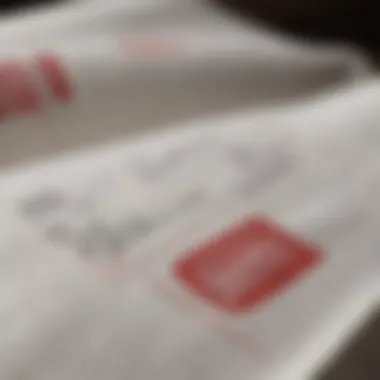
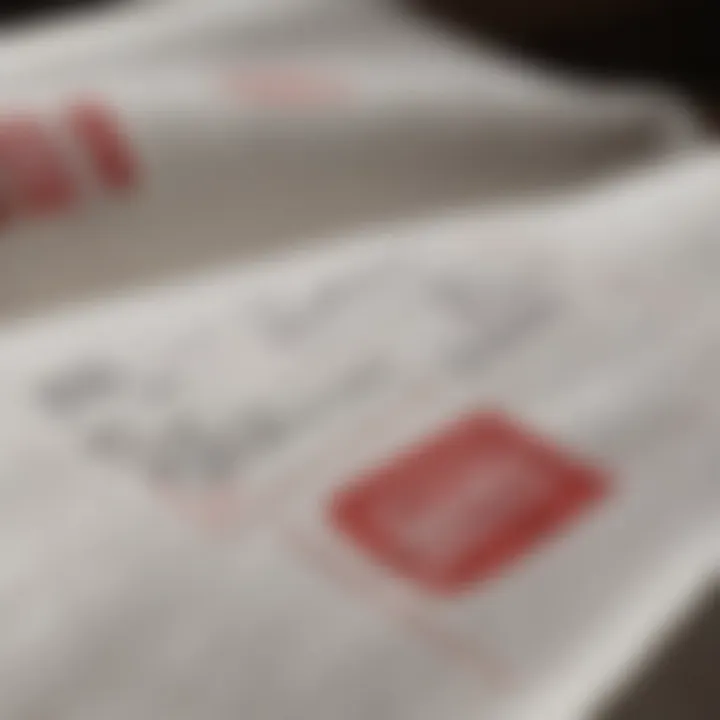
Preventive measures play a crucial role when it comes to dealing with makeup stains on clothing. By implementing certain strategies before applying makeup, you can effectively minimize the risks of staining your garments. This section explores various preventive techniques that can minimize the impact of makeup on clothing, ensuring that you enjoy your beauty routine without the worry of damaging your wardrobe.
Pre-Application Techniques
Using Barrier Products
Using barrier products is an effective way to protect clothing from unavoidable makeup stains. Barrier products are typically lightweight gels, sprays, or lotions designed to create a protective layer over the fabric. Their key characteristic is the ability to repel makeup particles while allowing the skin to breathe. This makes them a popular choice among makeup lovers who wish to maintain the integrity of their clothes.
One unique feature of barrier products is their versatility. They can be applied to various fabrics without altering their appearance or feel. Additionally, they serve as a safeguard against sweat and oils that can further contribute to stains. The primary advantage is that they significantly reduce the chance of makeup transfer to clothing. However, it is important to note that some products may require time to dry, which can be inconvenient for those on a tight schedule.
Choosing Appropriate Clothing
Choosing appropriate clothing is another vital aspect to consider for preventing makeup stains. Opting for specific materials that are less likely to absorb makeup can make a significant difference. Fabrics like polyester and synthetic blends are known for their stain-resistant properties and are often an ideal choice for wearing while applying makeup.
The key characteristic of selecting the right clothing is that it can make cleanup easier. These fabrics repel some makeup products, which minimizes absorption. However, it is crucial to keep in mind that even stain-resistant fabrics may not be entirely free of stains if not handled properly. The disadvantage is that you might have to compromise on style, as some high-fashion pieces may not be made from stain-resistant materials.
Care for Makeup Accessories
Clean Brushes Regularly
Regularly cleaning makeup brushes contributes significantly to the goal of preventing makeup stains on clothing. Makeup brushes can harbor product residue, oils, and bacteria, which can transfer to clothing during application. The key characteristic of maintaining clean brushes is it not only improves application techniques but also minimizes the risk of stains.
One unique feature of good brush hygiene is that it enhances the effectiveness of the makeup products you use. Clean brushes ensure that products apply smoothly and evenly. The main advantage is that your clothing remains protected from unwanted transfer. However, the downside is the additional time commitment it requires to keep brushes in pristine condition.
Store Products Safely
Storing makeup products safely is essential for protecting clothing from accidental spills and stains. A cluttered makeup area can lead to mishaps, making it important to organize and store products in a manner that reduces the risk of them coming into contact with fabrics. The key characteristic of proper storage solutions lies in their ability to provide easy access while keeping items secure.
A unique advantage of safe storage is that it limits exposure to sunlight and moisture, which can degrade makeup quality over time. Additionally, using compartments or pouches can ensure that liquids do not leak onto clothing items. However, one disadvantage is that it requires a level of diligence and organization that some may find challenging to maintain consistently.
Implementing these preventive measures can significantly decrease the likelihood of makeup stains, thus allowing individuals to enjoy their beauty rituals without added stress.
Caring for Treated Fabrics
Caring for treated fabrics is a crucial aspect of maintaining garments that have undergone stain treatment. Once the initial stain is addressed, how one cares for the fabric after treatment determines its longevity and appearance. Understanding the right post-treatment procedures can prevent further stains and preserve the integrity of the garment.
Washing Guidelines Post-Stain Treatment
After a makeup stain has been treated, washing the fabric correctly is essential to ensure that the stain does not resurface and to maintain the fabric’s quality.
Temperature Considerations
Temperature plays a significant role in stain removal and fabric care. Using the correct water temperature can aid in breaking down any lingering makeup residues while protecting the fibers of the fabric.
Washing in cold water is generally recommended for delicate fabrics, like silk, as hot water can set stains and damage fibers. In contrast, higher temperatures can be effective for more durable materials such as cotton.
A very beneficial aspect of temperature considerations is that it allows the user to customize their approach based on fabric type. Cold water is energy-efficient and can help in preventing colors from bleeding. However, one must avoid extreme temperatures that could lead to shrinkage or fabric distortions, especially with those more sensitive materials like wool.
Choosing Appropriate Washing Modes
Selecting the right washing mode is another important facet of caring for treated fabrics. Different fabrics require different treatment in the wash. For instance, delicate fabrics may benefit from a gentle cycle, while sturdier items can tolerate a standard wash.
This choice is beneficial because it reduces the risk of damage while effectively cleaning the garment. Special settings, such as hand wash or delicate cycle options, are designed to protect fibers from agitation that could lead to wear or fading over time.
The unique feature of selecting appropriate washing modes lies in its capacity to extend the lifespan of garments. However, one needs to ensure compatibility between the fabric and the chosen mode, as an incorrect setting could result in ineffective cleaning or damage.
Drying and Ironing
After washing, the drying and ironing steps can directly impact how effectively the garment is treated. Many people overlook the importance of these steps in taking care of makeup-stained clothing.
Avoiding Direct Heat
It is crucial to avoid direct heat when drying items that have been treated for stains. Heat can set stains if they are not fully removed, making them far more difficult to eliminate in the future.
Using air drying or lower heat settings in the dryer is a beneficial practice. This method helps maintain the fabric’s original texture while also preventing shrinkage. It’s advisable to check for any remaining stains before utilizing heat. This way, you can ensure that the garment is completely clear of stains.
Proper Ironing Techniques for Stained Areas
Irons can sometimes be detrimental when used on fabrics with remaining stains. Applying heat directly over a stain can cause it to set, embedding it permanently into the fabric.
It's critical to adopt proper ironing techniques, such as placing a cloth between the iron and fabric, avoiding direct contact with stained areas. This approach can provide a protective barrier, preventing heat from exacerbating any remaining imperfections. Using moderate iron settings that align with fabric types can also prevent damage and foster better overall care.
Important Reminder: Always address stains thoroughly before ironing, as heat can permanently set unwanted marks permanently.
By understanding these factors surrounding post-treatment care, one can improve the longevity of their garments while minimizing the risk of makeup stains returning or worsening.
